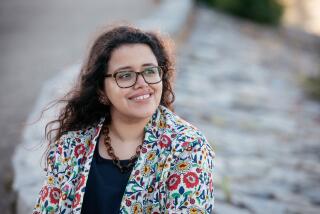DISCOVERIES
IN 1981, Rosamond Purcell, an artist and photographer who collaborated on several book projects with the late Stephen Jay Gould, was somewhat reluctantly teaching a photography class in Rockport, Maine, when she and her students stumbled upon the world of William Buckminster, a retired antiques dealer in the little town of Owls Head on the Maine coast.
Buckminster had been saving things for a long time; his 11 acres, houses, barns and chicken coops were filled with discarded objects: piles of pipe several stories high, architectural artifacts, ancient books, sodden clothing -- the whole of it disintegrating with the help of weather, termites, rodents and other small animals.
For Purcell, a natural scavenger, a connoisseur of patina, lichen and the poetry of half-eaten manuscripts, Buckminster’s hoard was a gold mine. Eyes glittering, shameless, she befriended him -- visited, foraged and grew to respect, admire and care for him.
Buckminster, born in 1922, descendant of sea captains, emerges as part curator, part collector, part sage, part craftsman. “It was mysterious in its excess,” Purcell writes of his property. “It was as if a magnet had dragged several hotels, a waterfront, and a whole town up or down the coast to this spot.” Her account reminds me of a French documentary, “Les Glaneurs et la Glaneuse” (“The Gleaners and I”), about a tribe of people who survive on what’s left over from various harvests and urban leavings found in dumpsters. I’m buying up copies of “Owls Head” as presents for friends. The photographs Purcell includes in the back of the book will probably remind them and many other readers of the work of W.G. Sebald. They depict the raw material of history.
Purcell writes that as a photographer she’s always seen things on two levels: “the surface and also whatever lies beneath.” Her father, a professor of Byzantine history and Victorian literature, once examined her photos of a termite-damaged entomology book unearthed in Harvard’s Museum of Comparative Zoology and fascinated her by reconstructing a few lines in French about Russian peasants migrating from the country to the cities. “As always,” she writes, “my father extracted the most meaning from the least available text.” His daughter is someone who “repeatedly falls in love (for it feels like love to me) with the way things look.” Of her Owls Head discovery, she writes: “I spend most of my life surrounded by man-made objects. I am familiar with the surface of things. To find them embedded in the natural world was a newfound pleasure -- still -- I had never seen so much stuff to which so much had happened.”
Not least of which is Buckminster himself. Purcell spends years gently piecing together the story of his life and his ancestry in Owls Head. I love how gentle she is with him, in spite of her driving desire to get into his buildings, peek behind his doors and acquire objects he is often reluctant to sell. She talks with friends in academia: Is a chair leg still a chair or something different? She brings Buckminster to her studio in Cambridge, Mass., and takes him to meet her colleague Gould, who is busy filming a lecture for Canadian television. Purcell and Buckminster slip away: “Come to think of it,” she tells us, “I have had practice retreating from the dens of great thinkers all my childhood and, perhaps less becomingly, into middle age.”
She notes that her husband once said that Buckminster, “that tough, gnomelike figure pounding away at metal with a hammer, projected a Wagnerian force that reminded him of Alberich.” And she adds: “I saw him too as a kind of deity from a Down East pantheon of gods that included the Lobster God, the God of the Outer Shoals, and the hardscrabble Potato God. Buckminster is the god who presides over all great weathered copper and his standards -- decency, moderation, and hard-won effort -- are invisibly encoded onto every surface.”
--
More to Read
Sign up for our Book Club newsletter
Get the latest news, events and more from the Los Angeles Times Book Club, and help us get L.A. reading and talking.
You may occasionally receive promotional content from the Los Angeles Times.






